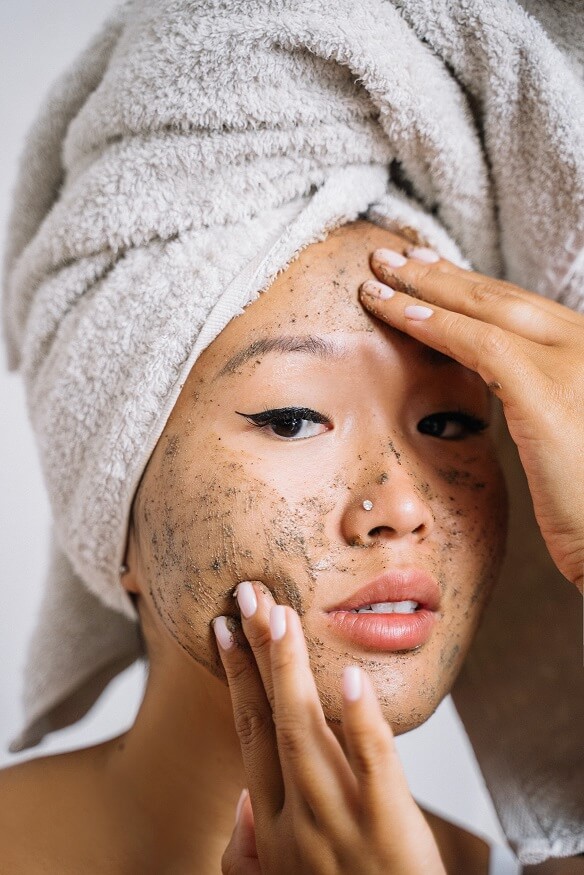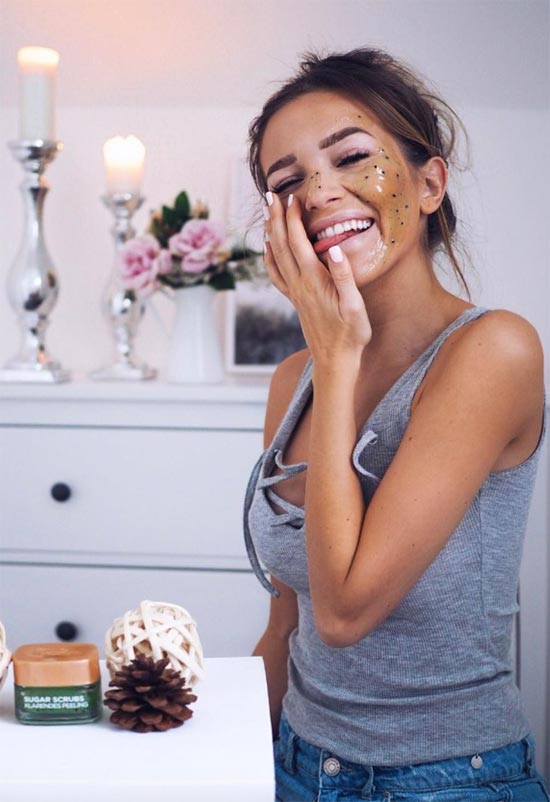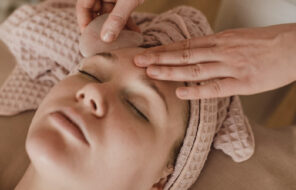Who doesn’t want clear, radiant skin? For most of us, fighting pimples, blackheads, whiteheads, and even general dullness from dry skin patches is a constant battle. The skincare industry offers plenty of products designed to buff, exfoliate, moisturize, and give you a glow. However, these often come at a cost that may not be realistic for all budgets.
Meanwhile, many people are unaware that everyday food ingredients tucked away in your kitchen cabinets can give you enviable skin at a fraction of the price of traditional skincare products. While you should always perform a patch test before slathering your face with a DIY scrub, you can whip up the following recipes from the comfort of your own home.
The bare bones face mask
We know — the following recipe technically isn’t a scrub but more of a mask. However, thanks to the addition of lemon juice, it works to aid in cellular turnover for a brighter complexion. You’ll appreciate that this mask is easy to reproduce since it relies on only two ingredients: honey and lemon juice.
Before you use it, be mindful that citrus juices applied to the face can increase your skin’s photosensitivity. This means that a lemon juice-based scrub or mask is best applied at night. And when you head out the next day, don’t skip the SPF. Also, never apply citrus juice directly to your skin without diluting it, as the acids can be too strong.
Recipe:
- Mix 1 tablespoon of organic honey with juice from half a lemon.
- Mix thoroughly and apply over your face and neck.
- Leave it on for 20 minutes.
- Rinse and follow with a moisturizer.
Indian gooseberry scrub
You might know this fruit by a different name, amla. Amla fruit is rich in vitamin C, a nutrient that boosts collagen production and naturally brightens your complexion. Likewise, if you’re struggling with hyperpigmentation, amla fruit’s vitamin C contents also work to prevent excessive melanin production. This makes it as effective as hydroquinone, minus the risks.
More importantly, this simple DIY scrub doesn’t require a laundry list of ingredients. To make the scrub, all you need is amla powder and water.
Recipe:
- Mix amla powder with water into a gritty consistency to avoid it being too runny.
- Apply to your face and use it as a gentle scrub.
- Use it just once weekly at first, possibly increasing frequency to twice weekly if your skin tolerates it.
Horseradish and apple cider vinegar scrub
Most of us think of horseradish as a spicy sauce to put on food. However, horseradish is a natural ingredient rich in antioxidants and vitamin C. It’s often known as a critical ingredient in many traditional Chinese medicines but is also scientifically proven to work as an anti-inflammatory that can aid issues like hyperpigmentation.
Although horseradish can be used alone, most recipes suggest pairing it with apple cider vinegar (which is also known to combat acne) to improve potency.
Recipe:
- Combine horseradish powder with a brightening agent, like apple cider vinegar, and mix to a gritty texture.
- Apply to your face and neck and leave it on for five minutes.
- Rinse and follow with a moisturizer.
Oatmeal and yogurt scrub
If you have very sensitive skin, scrubs containing significant amounts of potent acids may be too harsh. So, this oatmeal and yogurt scrub is a gentler option that you can incorporate into your skincare routine more often.
Meanwhile, oatmeal has long been known as a beneficial ingredient for sensitive skin. Colloidal oatmeal is often recommended for people with eczema or psoriasis. With this simple recipe, oatmeal offers plenty of antioxidants, while yogurt contains lactic acid, a natural exfoliant.
Recipe:
- Grind 2 tablespoons of uncooked rolled oats using a coffee grinder or food processor.
- Mix the oatmeal powder, 1 tablespoon of plain Greek yogurt, and 1 tablespoon of jojoba or coconut oil in a bowl.
- Apply to a cleansed face, using gentle circular motions for 30 to 60 seconds.
- Rinse the scrub and follow with a moisturizer.
Coffee scrub
For those who want to slough off dead skin while brightening, you’ll appreciate a good old-fashioned coffee scrub. As with any homemade concoction, do a patch test first to ensure your skin can handle it. Coffee grounds, in particular, can sometimes be a bit too abrasive for sensitive skin.
Recipe:
- Mix 1 cup of finely ground coffee, 1 cup of brown sugar, 2 tablespoons of avocado oil, and 2 tablespoons of coconut oil.
- Apply the mix to cleansed skin, using soft circular motions for one to three minutes.
- After scrubbing, let it sit for a few minutes.
- Rinse with lukewarm water and follow with a moisturizer.
DIY scrub tips

DIY scrubs can be a great way to save money by leveraging household items you already have. But to get the best bang for your buck, these tips are essential.
- Conduct a patch test first. No matter how rugged you think your skin is, you never know if you might experience irritation when ingredients are mixed and applied topically. A patch test can help you avoid excessive irritation.
- Start slow. Scrubs fall under the mechanical exfoliation category. So, if you use them too frequently, you could encourage skin abrasions or irritation. Start once a week and slowly increase if your skin doesn’t react poorly.
- Be conscious of the timing. If you rely on a scrub that leverages citrus ingredients, start with nighttime applications only. Citrus acids can potentially increase your skin’s photosensitivity, which can encourage sunburns.
- Moisturize. Even the gentlest of scrubs still remove the skin. You’ll need to replenish lost moisture using a sufficient cream, oil, or lotion afterward.
- Practice good hygiene. Making DIY scrubs isn’t the same as buying a shelf-stable, pre-made scrub. You have no idea how long the scrub can last in its new mixed state before it turns. In most cases, liquid-based scrubs don’t have very long shelf lives. Do your research before attempting to save a scrub, and when in doubt, toss it.
Your kitchen is a gateway to better skin
We all want better skin, but sometimes buying a pre-made product isn’t feasible. If you’re ready to harness the power of your fridge or pantry, a DIY face scrub can be a smart solution. Just be sure to always do your research before engaging in spa science, and always perform a patch test to ensure you have no sensitivities or reactions.





